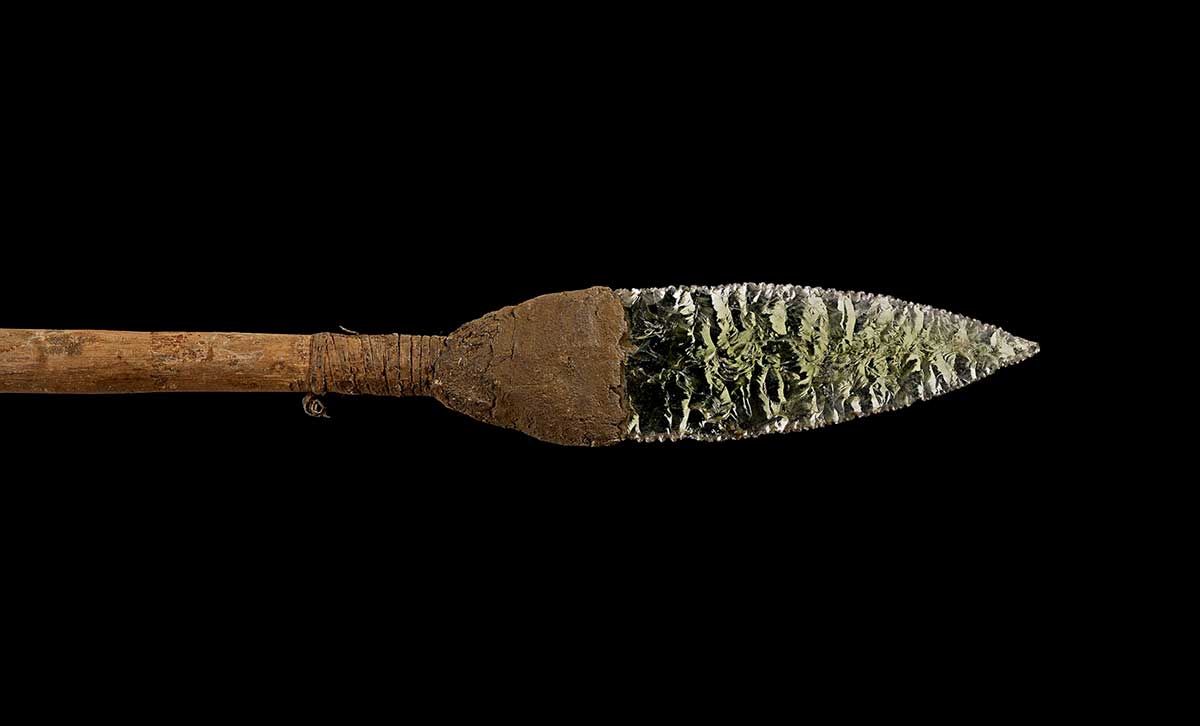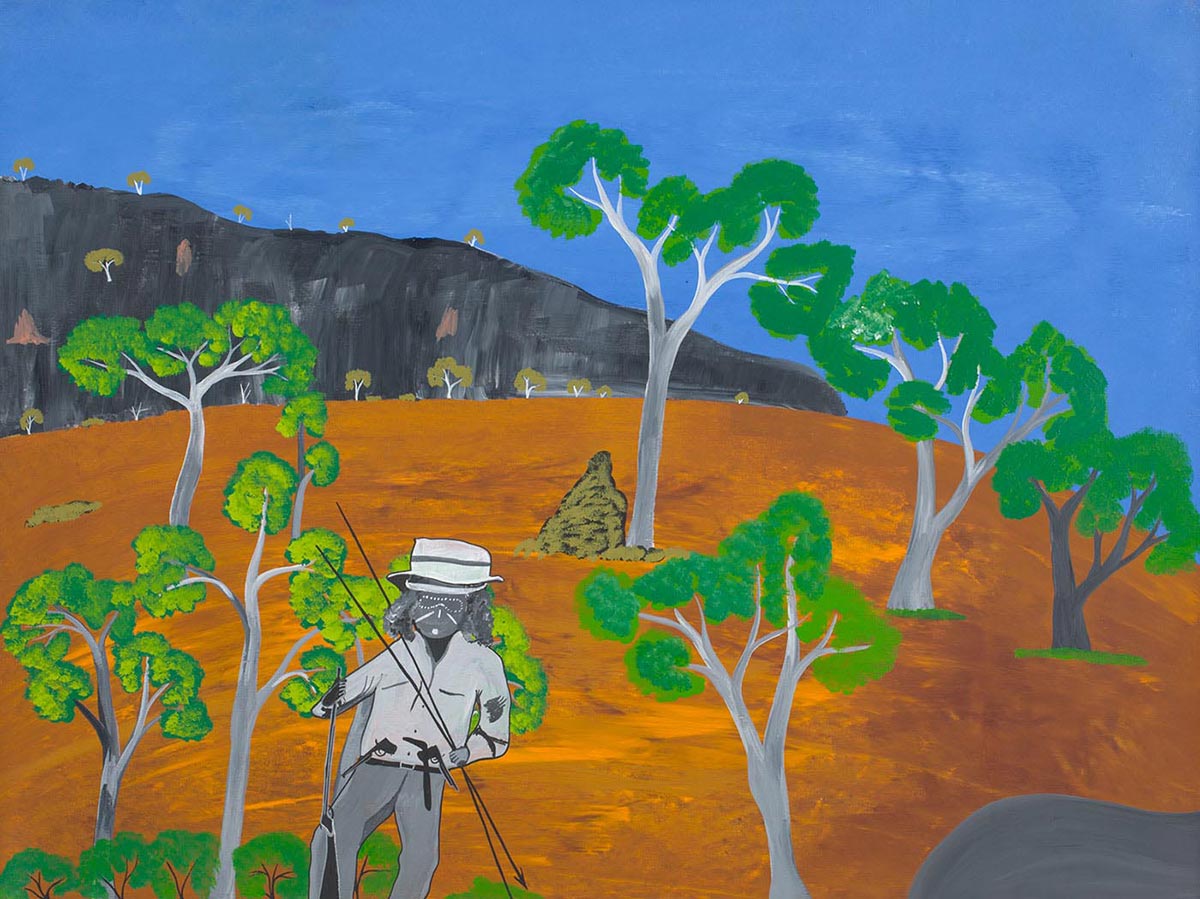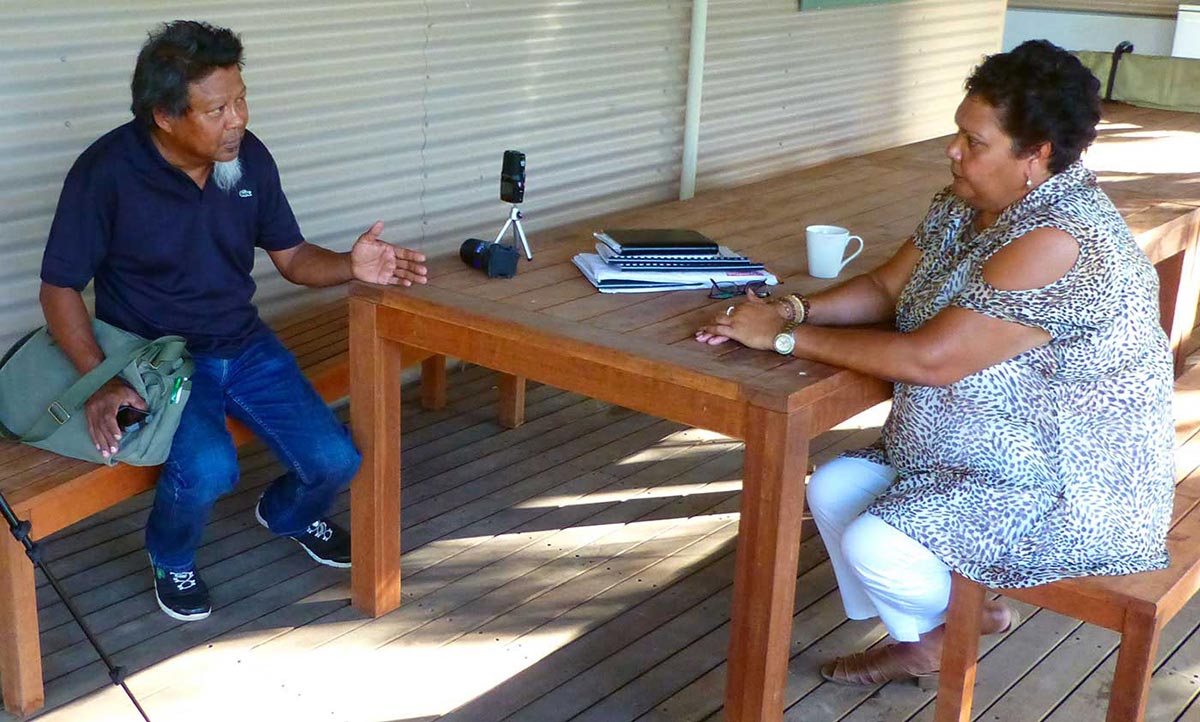Singing out across time
June Oscar, Bunuba elder, 2015:
This history teaches us that no matter how much we lost ... we were not defeated. When a stand is made that was as strong as the Bunuba’s, it is never final. Their call for justice, freedom and equality sings out across time.
Hundreds of people travelled to the Sydney Opera House in 2014 to perform Jandamarra: Sing for the Country. They were paying tribute to Jandamarra (known as Pigeon), a heroic figure from the Kimberley’s frontier conflict.
Violence had erupted in the Kimberley in the 1890s between Bunuba people and colonists over land. Lives were lost, black and white. Police Sub-Inspector Craven Harry Ord was sent to hunt down Jandamarra.
Telegram from George Phillips, Police Commissioner, 29 February 1896:
Pigeon and party must be got rid of forthwith. The fact of his being at large is a disgrace to the police. Head the party and let us hear no more of Pigeon.
A former police tracker, equipped with British weapons and Bunuba knowledge of country, Jandamarra baffled and terrified the colonists by the effectiveness of his campaign.
In an 1890s police report, Ord noted, ‘It would not matter if the whole British army were sent here, [Jandamarra] would still laugh at them from the top of the range’.
Eventually, the police brought in an Aboriginal tracker called Micki from the Pilbara. Jandamarra’s fight ended at Tunnel Creek on 1 April 1897, when he was shot dead by Micki. The police then beheaded the body.
June Oscar, Bunuba elder, 2013:
As far as we’re concerned, Jandamarra lives on. His spirit lives on, his people still live on. His spirit is carried in this country by people who speak the same language as he did.
Old objects
Sub-Inspector Craven Harry Ord was in charge of the police at Derby, in north-west Western Australia, during the late 1890s. Much of the police’s time was spent out on patrol, often searching for Kimberley Aboriginal people who had attacked the new settlers as they pushed further into Bunuba country.
Ord sent this Bunuba spear and the bowl and axe also on display in Encounters to Charles Hercules Read at the British Museum in 1899, noting in a letter accompanying the objects:
I had managed to accumulate a quantity of native weapons & thought they might be of value or interest to the museum ... In any case, the weapons are genuine native weapons of the day taken by police from native camps.
Like Bunuba objects made of wood and iron, Jack Macale’s painting references the entangled worlds people like Jandamarra inhabited. Macale shows Jandamarra wearing British clothes with his face painted before his final battle with the police. He carries a boomerang and spears, pistols and a rifle.
You may also like



